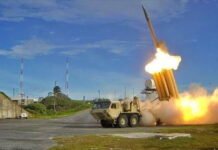
Key Points:
- After Operation Sindoor, Pakistan launched a major drone and missile attack on 15 Indian cities, targeting key military bases in the north and west.
- India’s Integrated Counter UAS Grid and Russian-made S-400 “Sudarshan Chakra” air defence system intercepted and destroyed all incoming threats.
- Debris from Pakistani drones and missiles has been recovered across border areas, confirming the attempted assault.
- In retaliation, India struck and neutralized Pakistan’s air defence radars, including the Chinese-made HQ-9 system in Lahore, leaving Pakistan’s airspace vulnerable.
- The S-400, with a range up to 400 km and advanced tracking technology, is a cornerstone of India’s air defence, capable of simultaneously engaging multiple threats.
New Delhi: In the tense aftermath of Operation Sindoor, which saw India strike nine terror camps in Pakistan and Pakistan-occupied Kashmir, Pakistan attempted a large-scale retaliation on the night of May 7–8. According to official statements and defence sources, the Pakistani military launched a coordinated drone and missile attack targeting 15 Indian cities, including Avantipura, Srinagar, Jammu, Pathankot, Amritsar, Kapurthala, Jalandhar, Ludhiana, Adampur, Bhatinda, Chandigarh, Nal, Phalodi, Uttarlai, and Bhuj.
Indian Air Defence Responds Swiftly
Thanks to the vigilance and preparedness of the Indian Armed Forces, every single one of these threats was neutralized. India deployed its Integrated Counter UAS Grid-an advanced anti-drone network-alongside the Russian-made S-400 Triumf air defence system, known locally as the “Sudarshan Chakra.” This system tracked, intercepted, and destroyed incoming drones and missiles before they could reach their targets.
Debris from the intercepted Pakistani drones and missiles has been found in several border areas, providing concrete evidence of the attempted attack. The Indian Army confirmed that no damage was done to military installations or civilian infrastructure.
India’s Counterstrike: Neutralizing Pakistani Air Defence
In a measured but firm response, the Indian Armed Forces targeted and neutralized Pakistan’s air defence radars at several locations, including Lahore. Notably, the Chinese-made HQ-9 missile defence system in Lahore was destroyed, effectively leaving the city’s airspace exposed. This move was intended to match Pakistan’s escalation in kind, while maintaining a focus on military targets and avoiding civilian harm.
S-400 “Sudarshan Chakra”: The Shield of Indian Skies
The S-400 Triumf, developed by Russia’s Almaz Central Design Bureau, is among the world’s most advanced long-range surface-to-air missile systems. India acquired the S-400 in a $5.43 billion deal with Russia in 2018 and has since deployed it across key strategic locations.
Key Features:
- Range: Engages targets from 40 km up to 400 km away.
- Tracking: Simultaneously tracks up to 300 targets and can engage 36 at once.
- Threats: Effective against fighter jets, ballistic missiles, cruise missiles, and drones-even stealth and low-flying threats.
- Radar: 360-degree surveillance and electronic warfare resilience.
- Mobility: Rapid deployment and integration with other Indian air defence assets for layered protection.
Commitment to Non-Escalation
Despite the scale of the attempted attack, India’s response was precise and proportional. The government reiterated its commitment to non-escalation, making it clear that while India will not initiate further conflict, it remains fully prepared to defend its territory and citizens if provoked.
India’s S-400 “Sudarshan Chakra” air defence system played a decisive role in thwarting Pakistan’s multi-city drone and missile barrage following Operation Sindoor. The incident highlights both the growing sophistication of India’s air defence network and the continued volatility along the Indo-Pak border. Indian forces remain on high alert, with a clear message: any attempt at escalation will be met with swift and overwhelming defensive action.




















































